IOCB covers 2024
Here are some of the front/back/inside covers created to accompany and illustrate scientific articles authored by IOCB researchers and published in 2024.
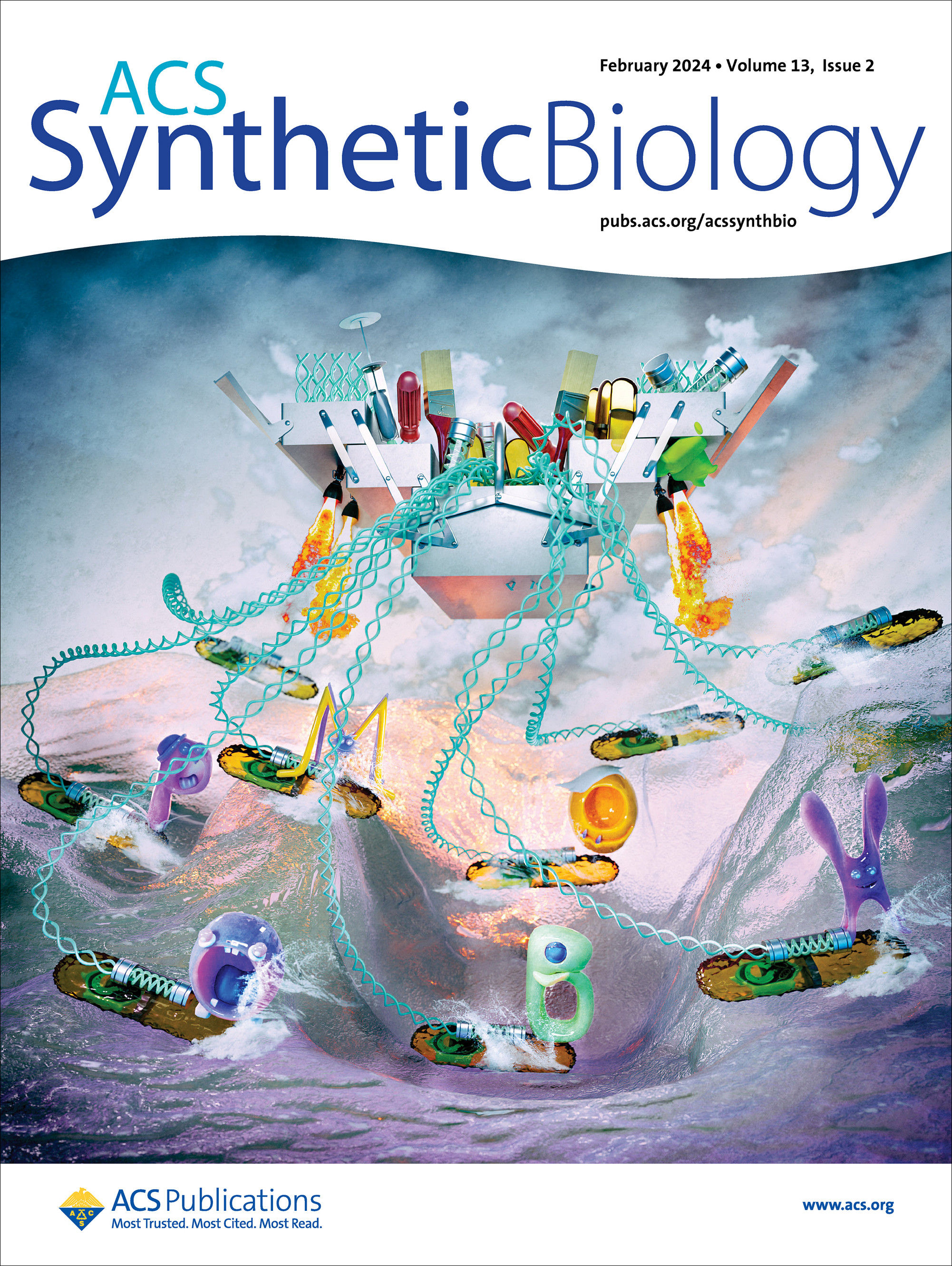
POMBOX: A fission yeast cloning toolkit for molecular and synthetic biology
Hébra et al. introduce POMBOX, a molecular cloning (MoClo) toolbox for the fission yeast Schizosaccharomyces pombe, a popular model organism in molecular biology. POMBOX is compatible with established Golden Gate MoClo toolkits for budding yeast and other organisms, allowing for easy exchange and reuse of genetic parts. (Cover art: Tomáš Belloň/IOCB Prague)
- Article: Hebra, T.; Smrčková, H.; Elkatmis, B.; Převorovský, M.; Pluskal, T. POMBOX: A Fission Yeast Cloning Toolkit for Molecular and Synthetic Biology. ACS Synth. Biol. 2024, 13, 558–567. https://doi.org/10.1021/acssynbio.3c00529
- Cover
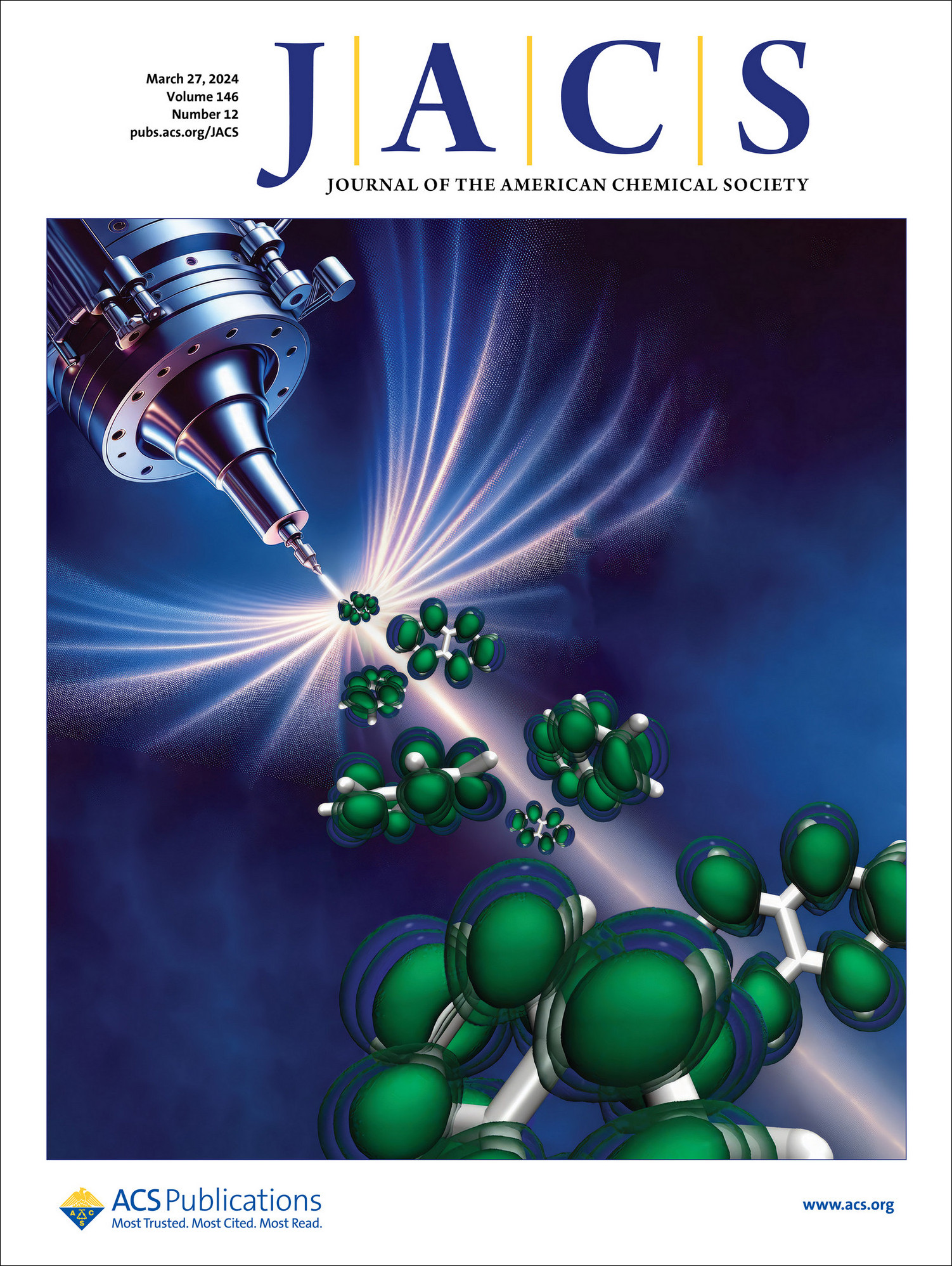
Stability and reactivity of aromatic radical anions in solution with relevance to Birch reduction
Artistic view of our experimental conditions: a liquid jet is generated from a cryogenic nozzle setup into a vacuum while naphthalene molecules evaporate from the jet.
- Article: Nemirovich, T.; Young, B.; Brezina, K.; Mason, P. E.; Seidel, R.; Stemer, D.; Winter, B.; Jungwirth, P.; Bradforth, S. E.; Schewe, H. C. Stability and Reactivity of Aromatic Radical Anions in Solution with Relevance to Birch Reduction. J. Am. Chem. Soc. 2024, 146, 8043–8057. https://doi.org/10.1021/jacs.3c11655
- Cover
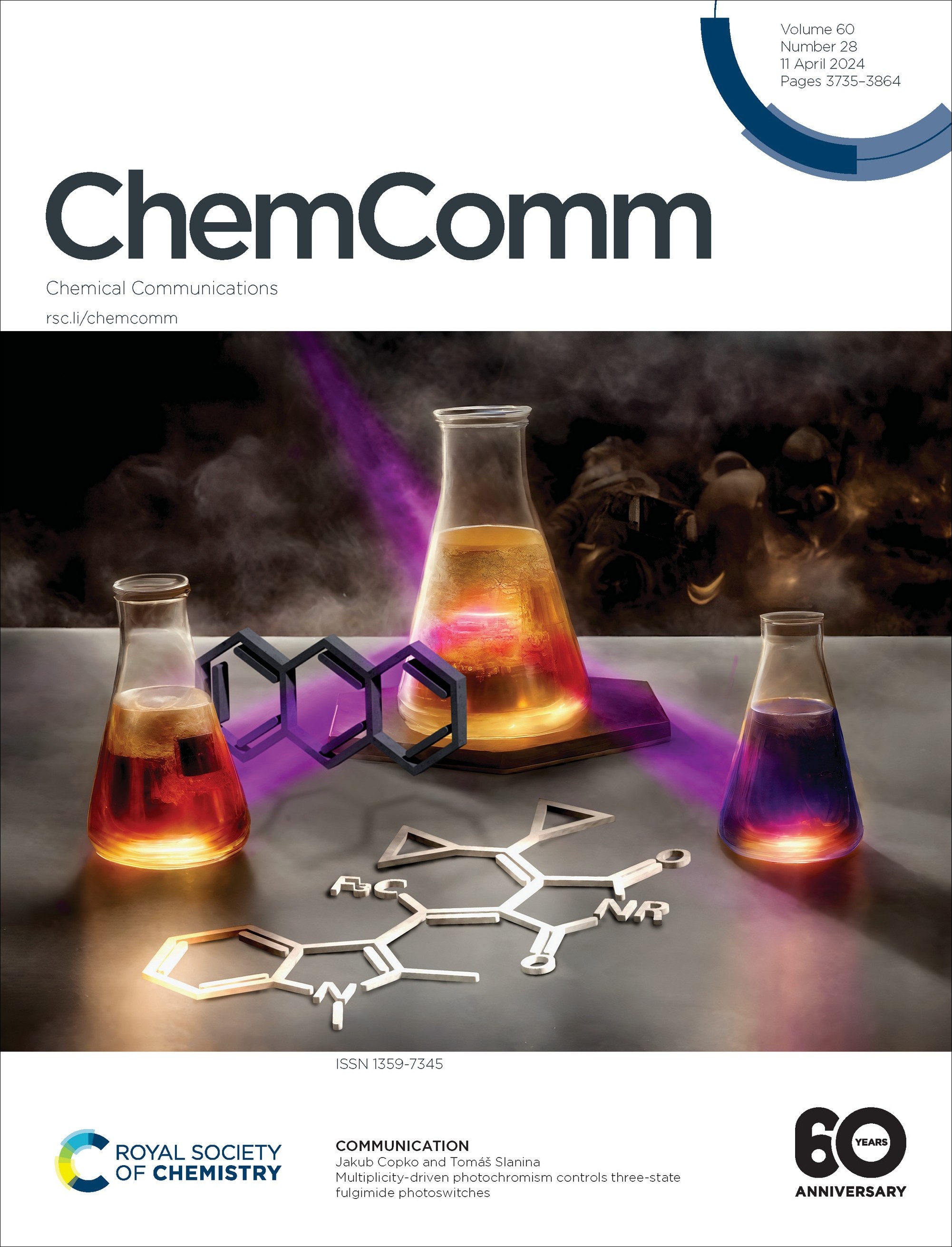
Multiplicity-driven photochromism controls three-state fulgimide photoswitches
Cover art: Lucie Wohlrábová/IOCB Prague
- Article: Copko J., Slanina T. Multiplicity-driven photochromism controls three-state fulgimide photoswitches. Chem. Commun. 2024. https://doi.org/10.1039/d3cc05975h
- Cover
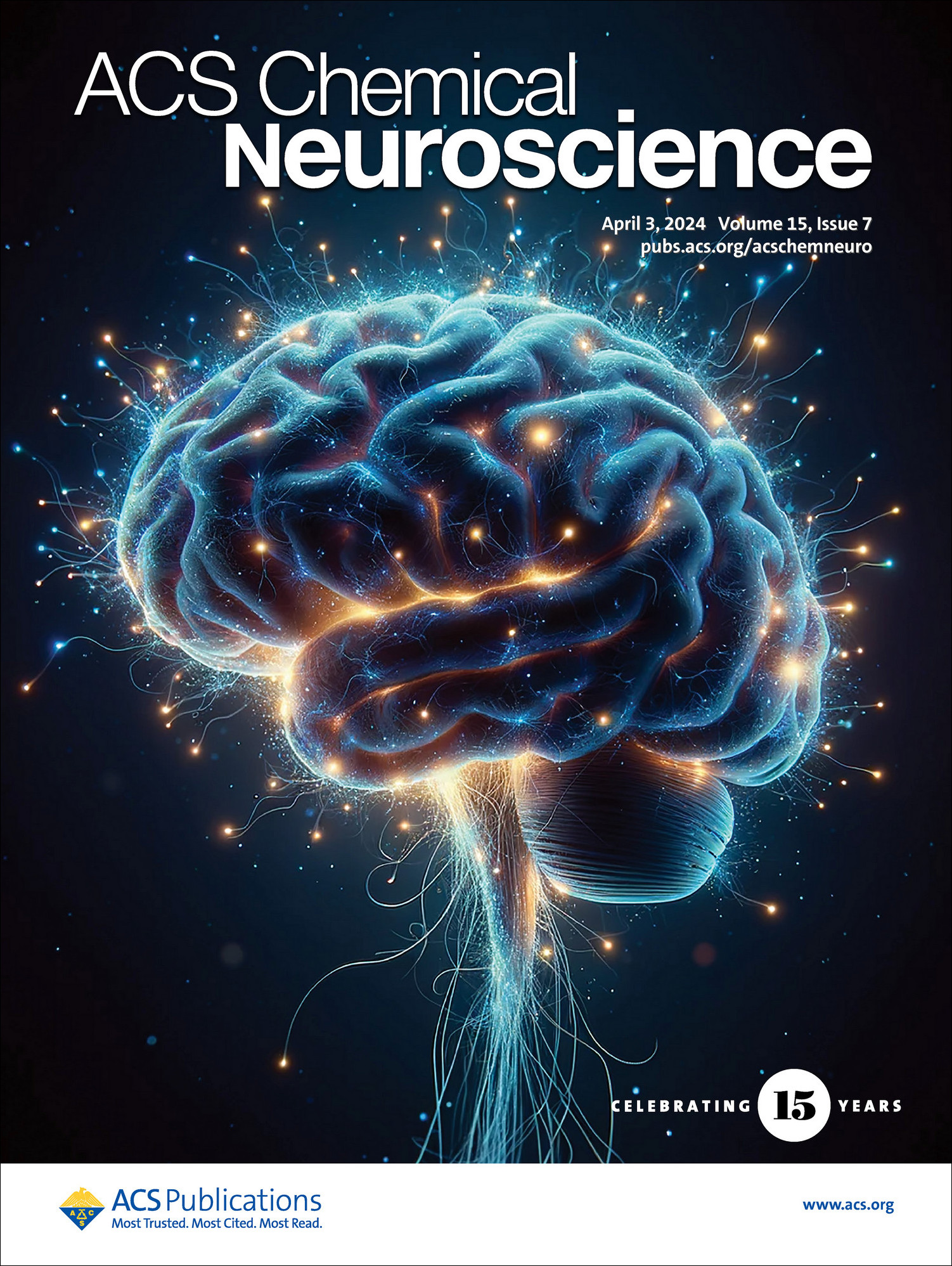
Parallel metabolomics and lipidomics of a PSMA/GCPII deficient mouse model reveal alteration of NAAG levels and brain lipid composition
Illustrative representation of the brain in which intense neurotransmitter excitations occur, represented by colored discharges. This cover art is intended to highlight our metabolomic and lipidomic study of GCPII-deficient mouse models, where it is the disruption of NAAG concentrations that affects the brain lipidome and metabolome. The cover art was generated using DALL·E 3.
- Article: Sedlák, F.; Kvasnička, A.; Marešová, B.; Brumarová, R.; Dobešová, D.; Dostálová, K.; Šrámková, K.; Pehr, M.; Šácha, P.; Friedecký, D.; Konvalinka, J. Parallel Metabolomics and Lipidomics of a PSMA/GCPII Deficient Mouse Model Reveal Alteration of NAAG Levels and Brain Lipid Composition. ACS Chem. Neurosci. 2024, 15, 1342–1355. https://doi.org/10.1021/acschemneuro.3c00494
- Cover
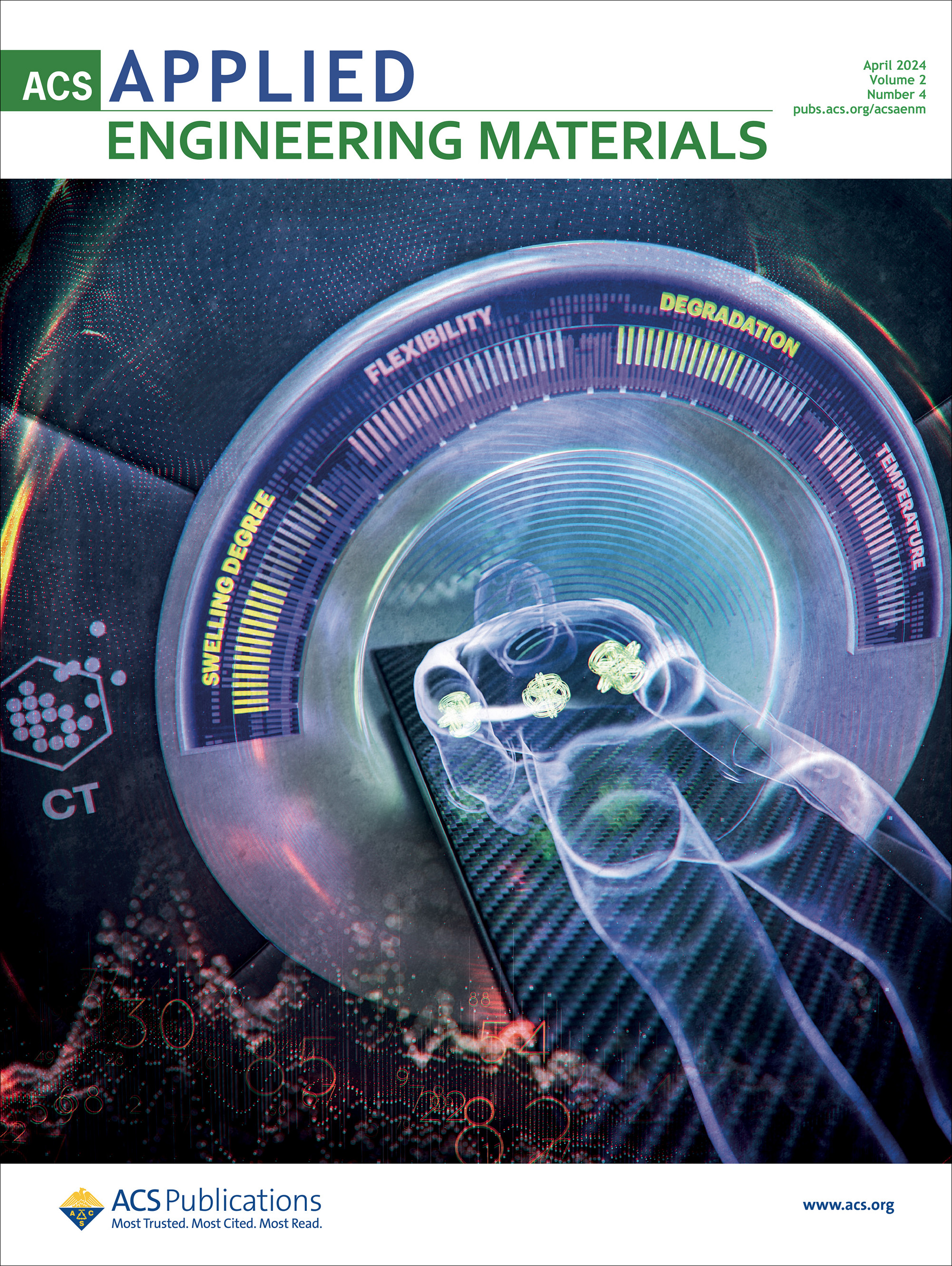
Photoprintable Radiopaque Hydrogels for Regenerative Medicine
Featured on the cover is a representation of advanced cross-linked gelatin-based hydrogels engineered for elevated radiodensity, enabling real-time tracking of material development in living organisms through radioimaging. These hydrogels stand as a versatile and adjustable platform, allowing for the tunability of mechanical properties, swelling, and rates of biodegradation. Noteworthy for their cell-interactivity, biocompatibility, and biodegradability, these materials signify a leap forward in bioengineering innovation, specifically within the field of tissue engineering. (Cover art: Tomáš Belloň/IOCB Prague)
- Article: Groborz, O.; Kolouchova, K.; Parmentier, L.; Szabó, A.; Van Durme, B.; Dunlop, D.; Slanina, T.; Van Vlierberghe, S. Photoprintable Radiopaque Hydrogels for Regenerative Medicine. ACS Appl. Eng. Mater. 2024, 2, 811–817. https://doi.org/10.1021/acsaenm.3c00533
- Cover
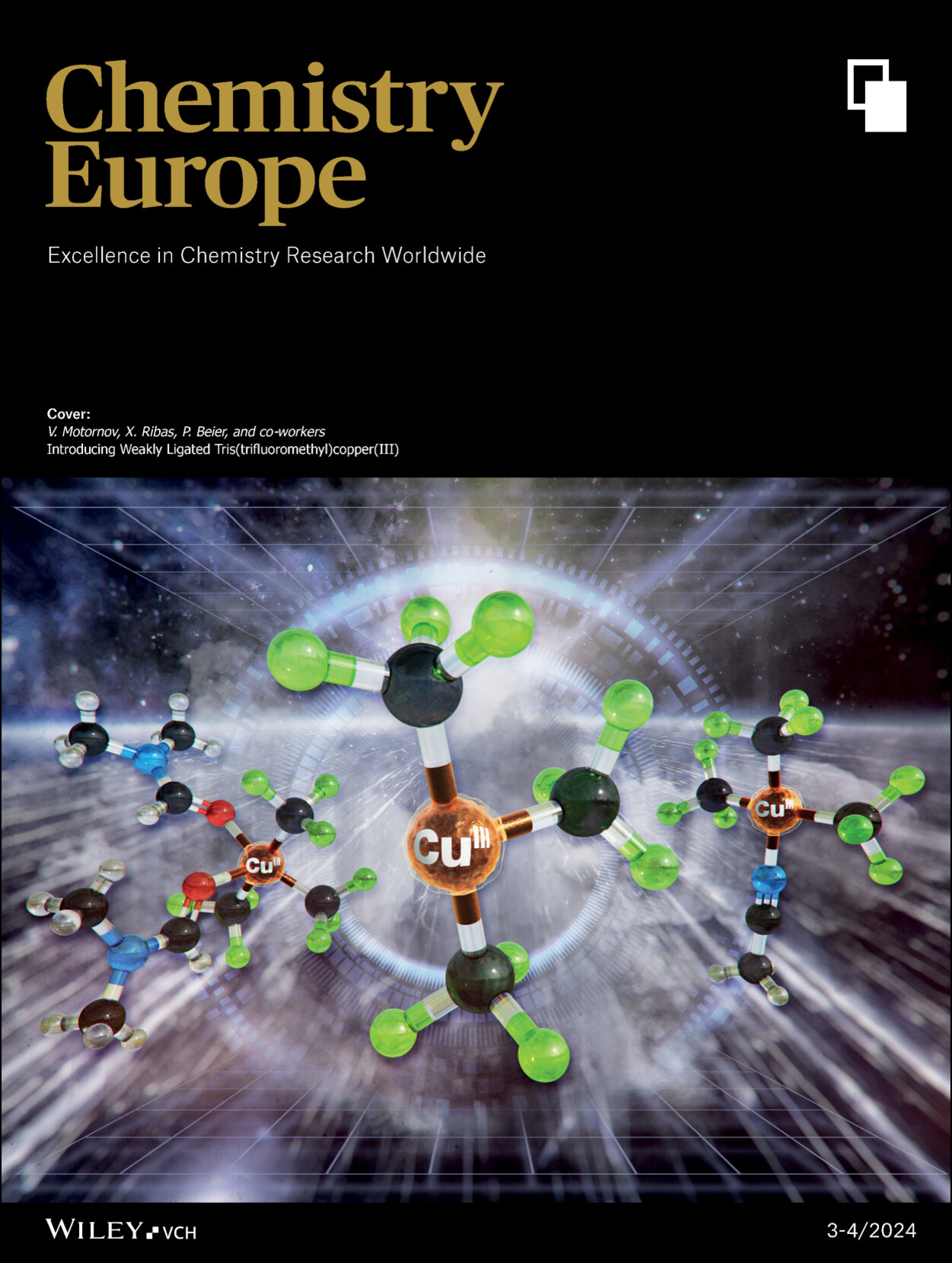
Introducing Weakly Ligated Tris(trifluoromethyl)copper(III)
An elusive T-shaped high-valent CuIII derivative, Cu(CF3)3 which is depicted on the cover, was stabilized in the form of solvates and theoretically studied. In their Research Article, V. Motornov, X. Ribas, P. Beier, and co-workers report the synthesis of solvates Cu(CF3)3⋅2DMF and Cu(CF3)3⋅MeCN, which were fully characterized including X-ray crystallography. Ligand substitution in these solvates enables access to a variety of new high-valent CuIII complexes. (Cover art: Tomáš Belloň/IOCB Prague)
- Article: Motornov, V.; Procházka, M.; Alpuente, N.; Salvador, P.; Slavíček, P.; Klepetářová, B.; Ribas, X.; Beier, P. Introducing Weakly Ligated Tris(trifluoromethyl)copper(III). ChemistryEurope 2024, 2, e202400004. https://doi.org/10.1002/ceur.202400004
- Cover
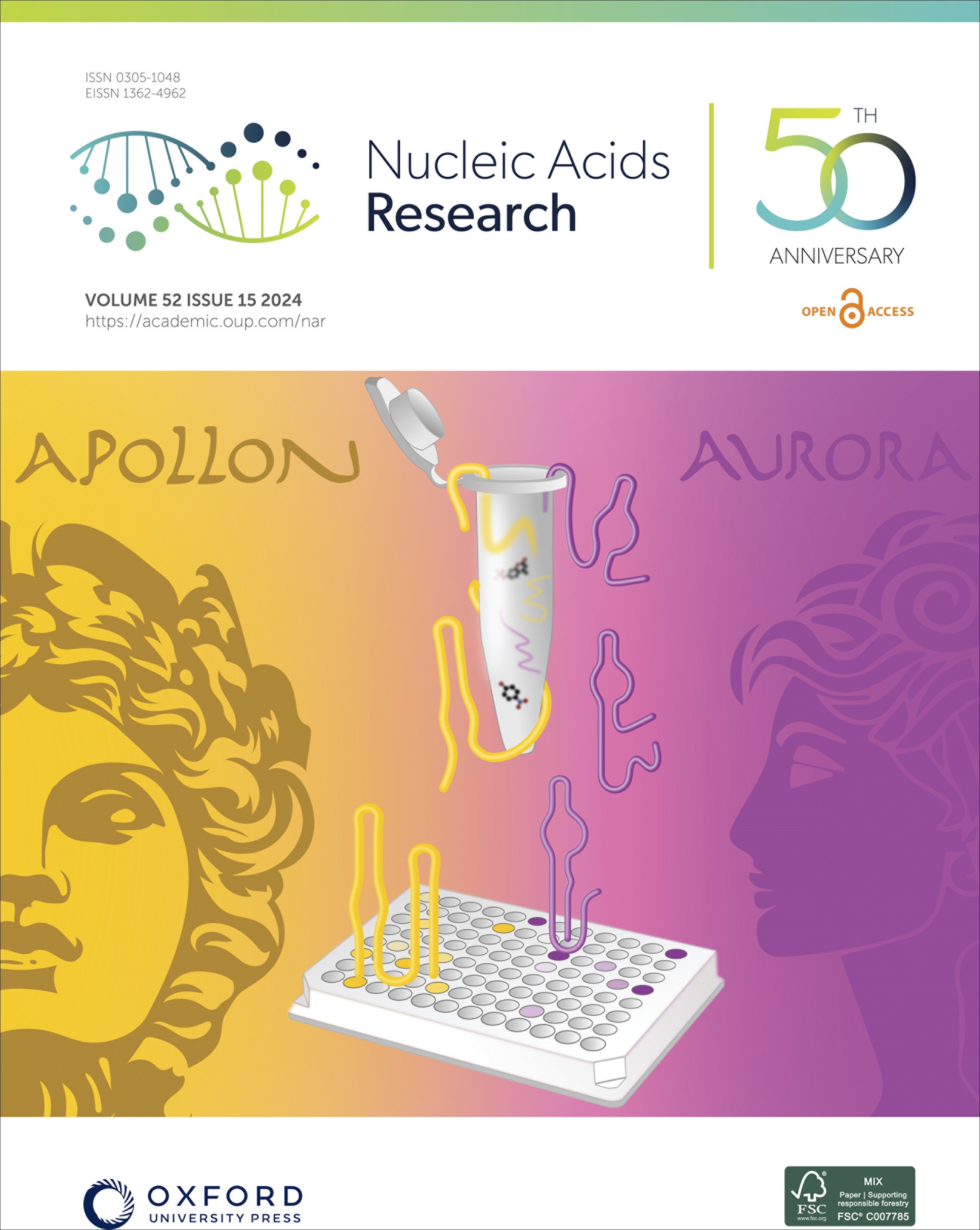
Apollon: a deoxyribozyme that generates a yellow product
Aurora: a fluorescent deoxyribozyme for high-throughput screening
Cover art: Jaroslav Kurfürst/IOCB Prague
- Article 1: Volek, M.; Kurfürst, J.; Kožíšek, M.; Srb, P.; Veverka, V.; Curtis, E. A. Apollon: a deoxyribozyme that generates a yellow product. Nucleic Acids Res. 2024, 52, 9062–9075. https://doi.org/10.1093/nar/gkae490
- Article 2: Volek, M.; Kurfürst, J.; Drexler, M.; Svoboda, M.; Srb, P.; Veverka, V.; Curtis, E. A. Aurora: a fluorescent deoxyribozyme for high-throughput screening. Nucleic Acids Res. 2024, 52, 9049–9061. https://doi.org/10.1093/nar/gkae467
- Cover
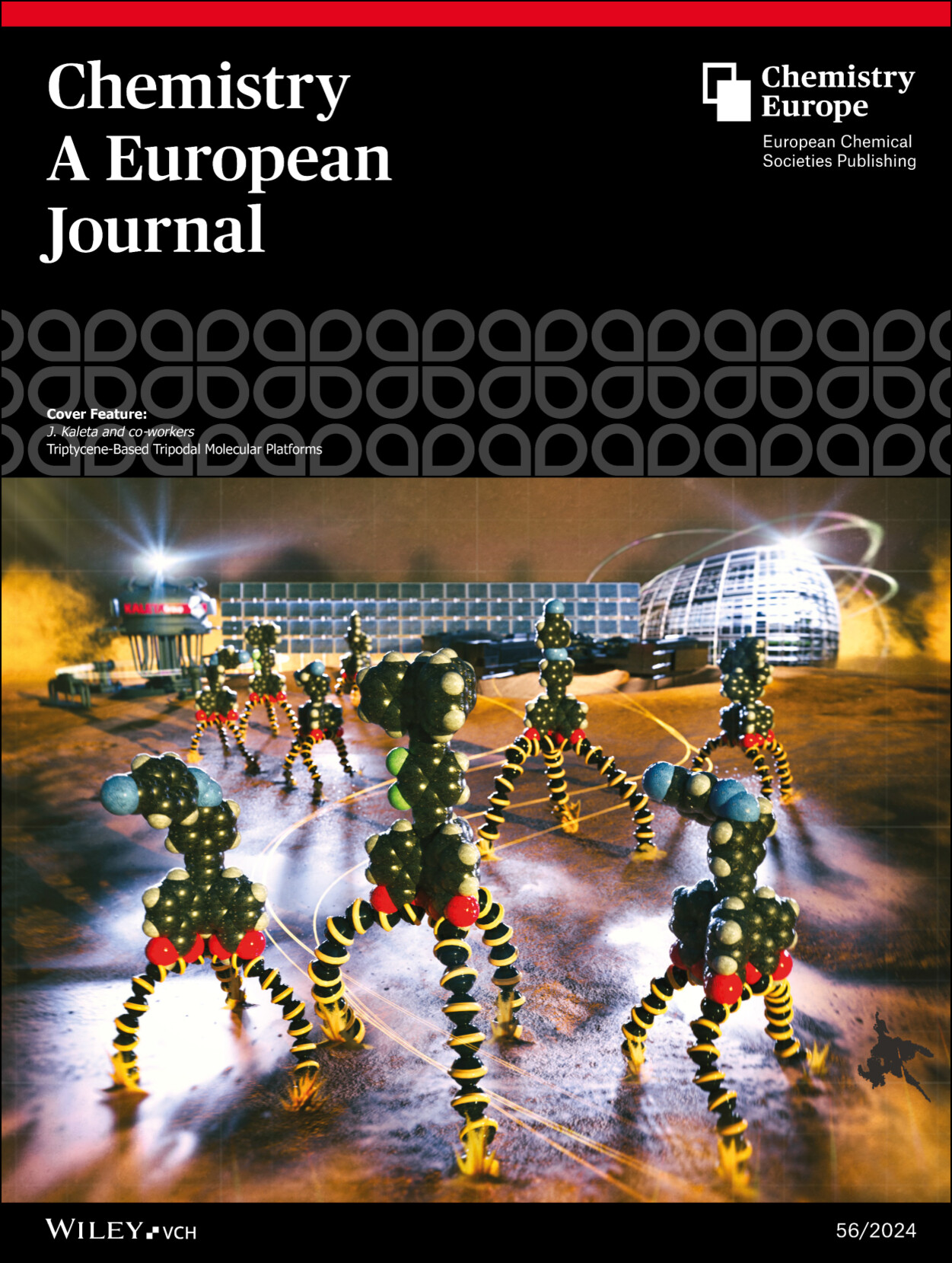
Triptycene-Based Tripodal Molecular Platforms
Molecular platforms are essential components of surface-mounted molecular devices, enabling smooth adhesion and adequate separation of functional units. We have synthesized two versatile triptycene-based tripodal pedestals—molecular tripods—with terminal alkynes in the axial position. Their versatility has been showcased by integrating them into various functional molecules, including unidirectional light-driven molecular motors, photoswitches, and Brownian molecular rotors, by using standard cross-coupling reactions. (Cover art: Tomáš Belloň/IOCB Prague)
- Article: Bastien, G.; Severa, L.; Škuta, M.; Santos Hurtado, C.; Rybáček, J.; Šolínová, V.; Císařová, I.; Kašička, V.; Kaleta, J. Triptycene-Based Tripodal Molecular Platforms. Chem. Eur. J. 2024, 30, e202401889. https://doi.org/10.1002/chem.202401889
- Cover
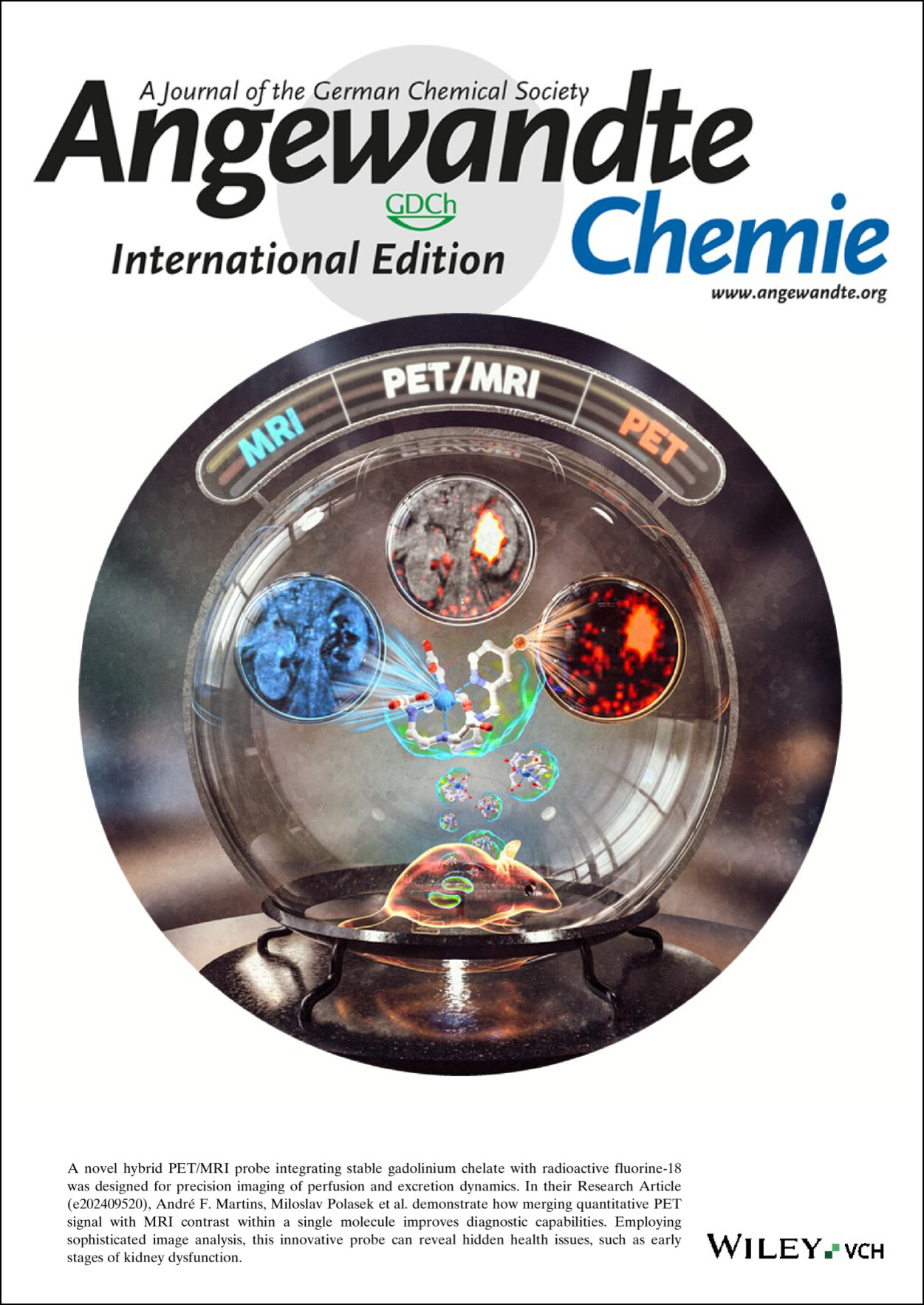
A Macrocyclic Hybrid PET/MRI Probe for Quantitative Perfusion Imaging In Vivo
A novel hybrid PET/MRI probe integrating stable gadolinium chelate with radioactive fluorine-18 was designed for precision imaging of perfusion and excretion dynamics. In their Research Article (e202409520), André F. Martins, Miloslav Polasek et al. demonstrate how merging quantitative PET signal with MRI contrast within a single molecule improves diagnostic capabilities. Employing sophisticated image analysis, this innovative probe can reveal hidden health issues, such as early stages of kidney dysfunction. (Cover art: Tomáš Belloň/IOCB Prague)
- Article: Kretschmer, J.; Chiaffarelli, R.; Cotton, J.; Blahut, J.; Ralis, J.; Dracinsky, M.; Matejkova, S.; Vuozzo, M.; Seeling, U.; Schmid, A. M.; Martins, A. F.; Polasek, M. A Macrocyclic Hybrid PET/MRI Probe for Quantitative Perfusion Imaging In Vivo. Angew. Chem. Int. Ed. 2024, e202409520. https://doi.org/10.1002/anie.202409520
- Cover
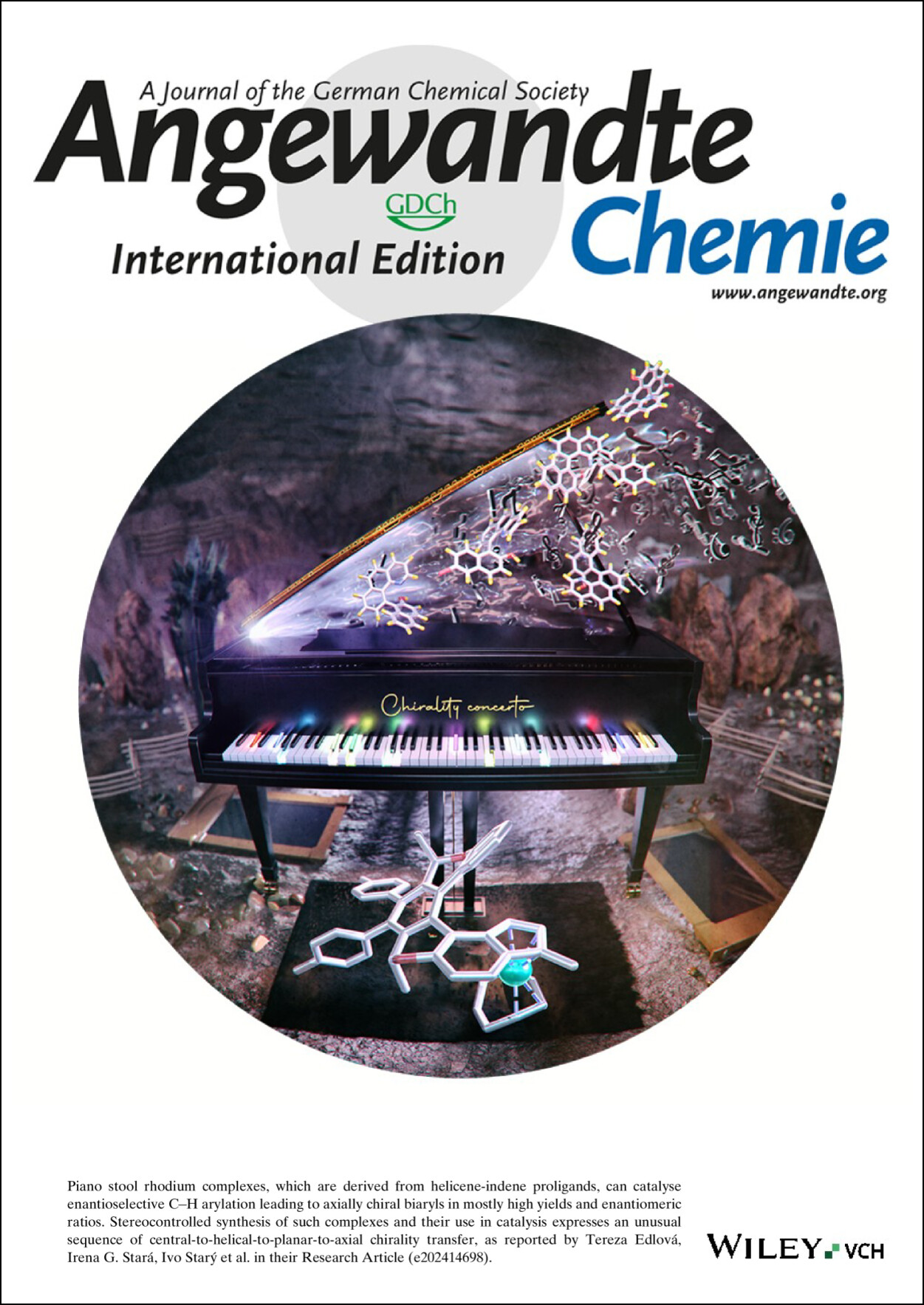
Stereocontrolled Synthesis of Chiral Helicene-Indenido ansa- and Half-Sandwich Metal Complexes and Their Use in Catalysis
Piano stool rhodium complexes, which are derived from helicene-indene proligands, can catalyse enantioselective C−H arylation leading to axially chiral biaryls in mostly high yields and enantiomeric ratios. Stereocontrolled synthesis of such complexes and their use in catalysis expresses an unusual sequence of central-to-helical-to-planar-to-axial chirality transfer. (Cover art: Tomáš Belloň/IOCB Prague)
- Article: Edlová, T.; Rybáček, J.; Cattey, H.; Vacek, J.; Bednárová, L.; Le Gendre, P.; Normand, A. T.; Stará, I. G.; Starý, I. Stereocontrolled Synthesis of Chiral Helicene-Indenido ansa- and Half-Sandwich Metal Complexes and Their Use in Catalysis. Angew. Chem. Int. Ed. 2024, e202414698. https://doi.org/10.1002/anie.202414698
- Cover



